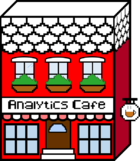ANLY482 AY2016-17 T1 Group5 - Methodology
| Overview | Description | Scope & Methodology | Visualizations | Technology | Limitations |
- Data Exploration
Study the ER diagram to understand what data and how it stored in the database. Understanding how the data are linked and identify what data will be required to create the visualization and perform analysis. After identifying the variable needed, we will request the sponsor to extracted the data from the database.
1. Data Preparation
Ensure that the data are of valid structure and correct format. Join the necessary file together to allow for creating of visualization.
2. Visualization of Sales across Time
Graph will be created for the user to view the sales across time. The graph will also allow the user to be able to quickly view the trend. They would be able to see when are the peak period where there are more sales and better allocate manpower to meet the demand. They can also and make comparison for the sale across different time period to know if they are performing better or worst.
Graph consideration: Calendar view/Horizon Graph
3. Visualization of gross sales, revenue, number of orders
This graph will allow the user to the value of the gross sales amount, revenue and number of order for different time period. The user should be able to see how well they are performing with a gauge or a marker to indicate the target.
Graph consideration: Bullet Graph
4. Association Analysis of Items
The graph will show the breakdown of food by categories such as main course, dessert and drinks. The purpose of this graph is to see what items the customer normally purchase together in order to come up with promotional bundle or discount to increase the customer return rate.
Graph consideration: Parallel Sets/Sankey Diagram
5. Visualization of Popular Items and modifier using cross-filter
This graph is to show sales of the different product to see which are the most popular item and modifier. Cross filter function can let the user identify which are the most popular item across different time. They can also see the increase or decrease in sale for the product compared to the previous week or month. The user can see which product is least popular and constantly rank at the lower tier and consider removing the item from the menu to prevent extra cost incurred from making the product and minimize food wastage.
Graph consideration: Treemap/Sunburst Diagram and bar chart with cross filter
6. Visualization of Productivity Analysis
This graph shows the time taken to prepare a particular dish over the course of the day. As there might be a few of the same dishes being prepared at the same time, an aggregation will be implemented to the variable. This graph will be able to inform users how long it takes to prepare a dish during different periods e.g peak hours vs non-peak hours. Understanding this data will allow business owners to identify when there is a spike in the time taken to prepare the dish at a certain time period, and hence might consider improving productivity through increasing human resource or increase kitchen equipment.
Graph consideration: Bar charts and area chart with cross filter
